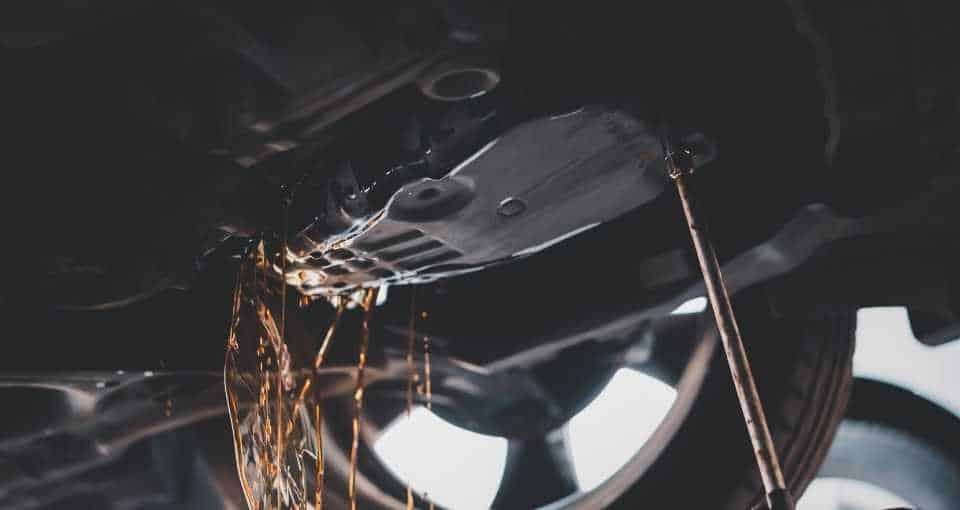Talking about Engine and Transmission oil, there is a question that I’m sure would be high up on the top ten frequently asked questions about lubricants, supposing such a list existed.
This question is: does transmission fluid expire?
Well, if you make a quick search on the Internet, you would see that the answer varies a lot. And if you ask an expert, it depends a lot who is answering this question, depending on whether the expert is an oil retailer or a technician who repairs transmissions.
You will see why I have chosen these particular characters if you read a little further.
In a way, it could be compared with food. Milk, for example, has a clear expiration date on the container, but it’s obvious that the milk inside is not going to explode in a “Mission Impossible” way a second after that expiration date.
In fact, lots of people take a look, and smell the content before throwing away a product in good conditions, just because a label dictates that its content has expired.
Difference of opinions
It’s hard to find a single and definitive answer to this question when not even oil manufacturers agree on an answer. It’s a pretty obvious fact that any kind of oil, once opened, starts deteriorating.
This can happen because of the contact with the air, or extreme heating conditions, friction and dirt that the oil endures while it’s lubricating an engine, a transmission or any mobile part.
But the question that many people ask is, what about the oil that was stored into a sealed bottle, protected from the heat and the sunlight.
Does that oil have an expiration date? And if so, how much time after it was bottled can that oil be safely used?
You may remember that I mentioned an oil retailer and a transmission expert technician… Well, here is the thing: oil retailers are supposed to have a lot of oil varieties and a good deal of stock.
They can have products stored for years, and they need to sell those products at some point. They are going to say that they keep their products in excellent environmental conditions, and that an old oil bottle that was properly stored and sealed, can be used as if it had just left the factory.
On the other hand, many mechanics or transmission technicians are going to be looking to provide their customers the best quality and service, and they are wary of risking their jobs and reputation by using a doubtful material.
They might risk using an old can of oil after testing the quality of its contents, but they are not going to say that to a customer. It’s better and safer to advise customers to use fresh oil.
Some facts About Transmission Fluids
There are several kinds of transmission fluids, and all need to meet a series of standards and regulations to be released to the market and to be recommended by the vehicle and transmission manufacturers.
Modern transmission fluids have many preserving agents and additives to work more efficiently and to last longer. Some car makers advertise that their transmissions are maintenance free, and that their proprietary transmission oil doesn’t need to be replaced for the lifetime of the vehicle.
If this were completely true, it would be because the engineers worked hard keeping these transmissions completely sealed and ultra isolated from the outside, and because new types of transmission oils have been developed for this purpose.
This ensures zero contact with the external air and avoids the formation of moisture, for example. This would do justice to the people who claim that a well sealed bottle has no expiration date.
However, there are other factors, and although there are a lot of happy users claiming that they never had to touch their gearboxes, with time this “maintenance free” concept changed to “extended maintenance intervals”.
Most of the European brands that claimed that their transmissions lasted more than the cars that they produced are now recommending having them serviced from 80 to 180 thousand kilometers or from 5 to 10 years. Others are not saying this to their consumers but are publishing it on their workshop manuals.
It’s confusing that companies like Volkswagen, for example, are placing manufacturing dates and suggested expiration dates on the labels of their bottles of transmission fluids for transmissions that are “maintenance free”.
This raises another doubt: maybe the containers, no matter how well sealed they are, can’t keep their contents fully protected from the outside conditions? Does the kind of oil inside the can make any difference?

Not Even Oil Manufacturers Agree on Lubricant’s Storage Life
Elf, the famous French lubricant brand, states on its website that oil in cans that seem old, is still usable as long as the cans are sealed, have been stored in a cool and dry location and no water or dirt has gotten inside the bottles.
On the other hand, Total, another French oil and gas manufacturer, now owner of Elf, declares on its website that “Under optimal conditions (stored in the original, unopened containers at moderate temperatures), motor oil usually remains stable for an extended period of time.
There should not be deposits on the bottom of the container. You cannot redissolve the deposits by simply shaking the container. The oil has to be replaced”
They continue to say that “engine oil’s properties are best if it is used within two years. After that, we recommend replacing the oil.” This is the same for transmission oils, automatic transmission oil being more delicate than manual transmission or differential oil.
Motul, another famous lubricant brand, mentions the term “Shelf Life” in many products on their catalogue. Motul products are ISO 9001 certified. The brand claims that, according to their quality procedure, their products are guaranteed for two years after their production date.
Castrol, the British lubricant’s manufacturer, released a very interesting article about how to “maximize industrial lubricants storage life”. Even though the title is about industrial lubricants, they cover lubricants in general, and the only difference they make is how much time a certain kind of oil can be used after having been stored.
The article mentions that the shelf life of a lubricant is often an overlooked aspect when designing a lubrication program. They explain that lubricants deteriorate over time and that a good practice is to know the shelf life of lubricants.
The article explains in detail how environmental factors (whether the lubricants are stored indoors or outdoors, the kind of container of the lubricant, the agitation, temperature variance and humidity) play a leading role in determining a lubricant storage life potential.
They emphasize that oil must be kept in a cool, clean and dry environment. It’s very interesting how, depending on each oil characteristics, such as base oil, types of additives and thickness, for example, they can estimate a lubricant’s shelf life.
According to them, oils that have low concentration of additives can be stored for more than five years, while oils that are soluble and fire-resistant have a short shelf life of about six months.
Conclusion and advice
Most lubricants come without an expiration date. They usually come with a manufacturing date and a production number, used by the factories to have control over the products that they launch, and to be aware of defective batches.
Depending on the kind of transmission oil, thickness, viscosity and their applications, based on what Castrol says and other information gathered from oil specialists, it can be said that a well stored and sealed lubricant can be used safely within 5 years after its manufacturing date.
After that time, it’s very hard, without an expensive and time consuming laboratory analysis, to determine if the oil has suffered any changes in its composition that could affect its lubricating properties.
My expert advice is not to take unnecessary risks and measure the potential negative impact that using a bad oil could have in an expensive DSG transmission, for example. If you are refilling an old and heavy transmission and you have some well stored old oil, or for some reason you can’t buy new oil, go ahead, do a little test to find any signs of bad oil, shake the bottle and do some checking of its content. If the oil shows a good, clear color, is smooth and you don’t find any signs of deterioration, just use it.
If you are going to service an expensive transmission, the cost of fixing or replacing that part is much higher than buying fresh transmission oil. I, as a good and conscious technician, would suggest that you play safe.
Fill it up with the best oil that you can find, of a manufacturing date of no more than two or three years at the most. You are going to be probably saving money in the long run, and will be satisfied, knowing that you have used the best product available for your transmission.
